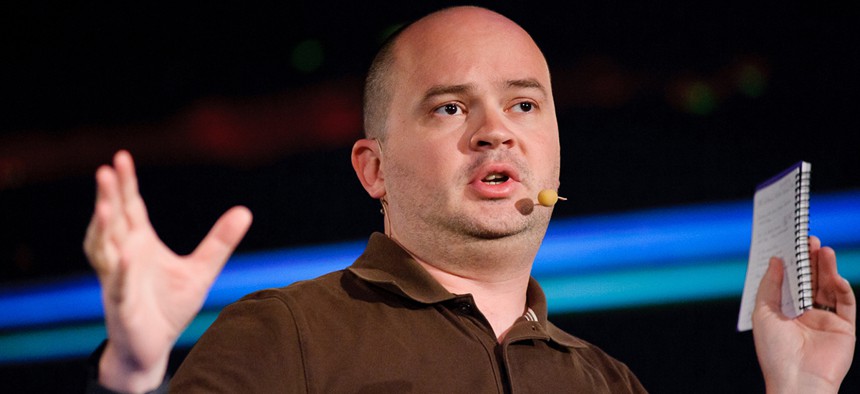Will the U.S. Digital Service Outlast Obama?

Mikey Dickerson, administrator of the US Digital Service. Flickr user O'Reilly Conferences
Since launching in August 2014 as a response to the failed launch of HealthCare.gov the previous fall, the digital team, or USDS, as it’s known, has garnered high-profile media attention for its efforts to attract Silicon Valley-caliber talent.
One of the Obama administration’s original digital gurus doesn’t have high hopes the White House’s signature effort to infuse new tech talent into government will last much beyond Jan. 20, 2017.
The U.S. Digital Service -- a small band of engineers, programmers and coders who help get troubled IT projects back on track -- was one of the administration’s “real achievements,” said Mike Kruger, who’s in charge of digital engagement at the Commerce Department.
But that may not be enough to save it.
“Sadly, I see USDS being archived with much of the rest of the Obama administration,” Kruger wrote in a Jan. 18 post published on LinkedIn on his top predictions for the year. “No candidate for president has spoken about it and with such a strong Obama fingerprint, it won’t be in the next administration’s best interest to keep it.”
Kruger first joined Commerce in 2010 as the agency’s digital director.
Since launching in August 2014 as a response to the failed launch of HealthCare.gov the previous fall, the digital team, or USDS, as it’s known, has garnered high-profile media attention for its efforts to attract Silicon Valley-caliber talent. Members of the team have been hauled in to work on some high-profile projects, including digitizing more of the immigration process and building more intuitive online services for veterans.
A sister effort spun up by the General Services Administration, called 18F, may have more longevity, Kruger predicted. In part, that’s because of 18F’s business model. Rather than funded through congressional appropriations, the team is funded by fees from the agencies it works with.
“I predict they will suffer in 2016 with staff recruitment as the end of the administration produces all kinds of unknowns for potential employees,” Kruger wrote. In addition, it’s unclear if working for a new administration -- Republican or Democrat -- will prove as attractive for the “change-the-world” types the government has been recruiting.
Still, “the work 18F is doing is important and after the election, they will have plenty to keep them busy,” Kruger said.
Over the past year, more than 4,000 people have applied for open slots with USDS. Officials say the federal “digital service” coalition – which also includes 18F and the Presidential Innovation Fellows program – currently numbers around 300 staffers.
President Barack Obama has said he hopes the work of USDS outlasts his administration.
“The most important thing we’re doing is building a pipeline, a set of traditions, in which really smart folks from the private sector can come in, and hopefully a tradition whereby the president recognizes what a powerful tool that is and is providing them the space to do their thing,” he told Fast Company in an interview last June.
Last year, U.S. Chief Technology Officer Megan Smith said her team is planning to “reach out to every campaign and make sure that everybody who’s running knows about the work we’re doing” related to USDS and 18F.





